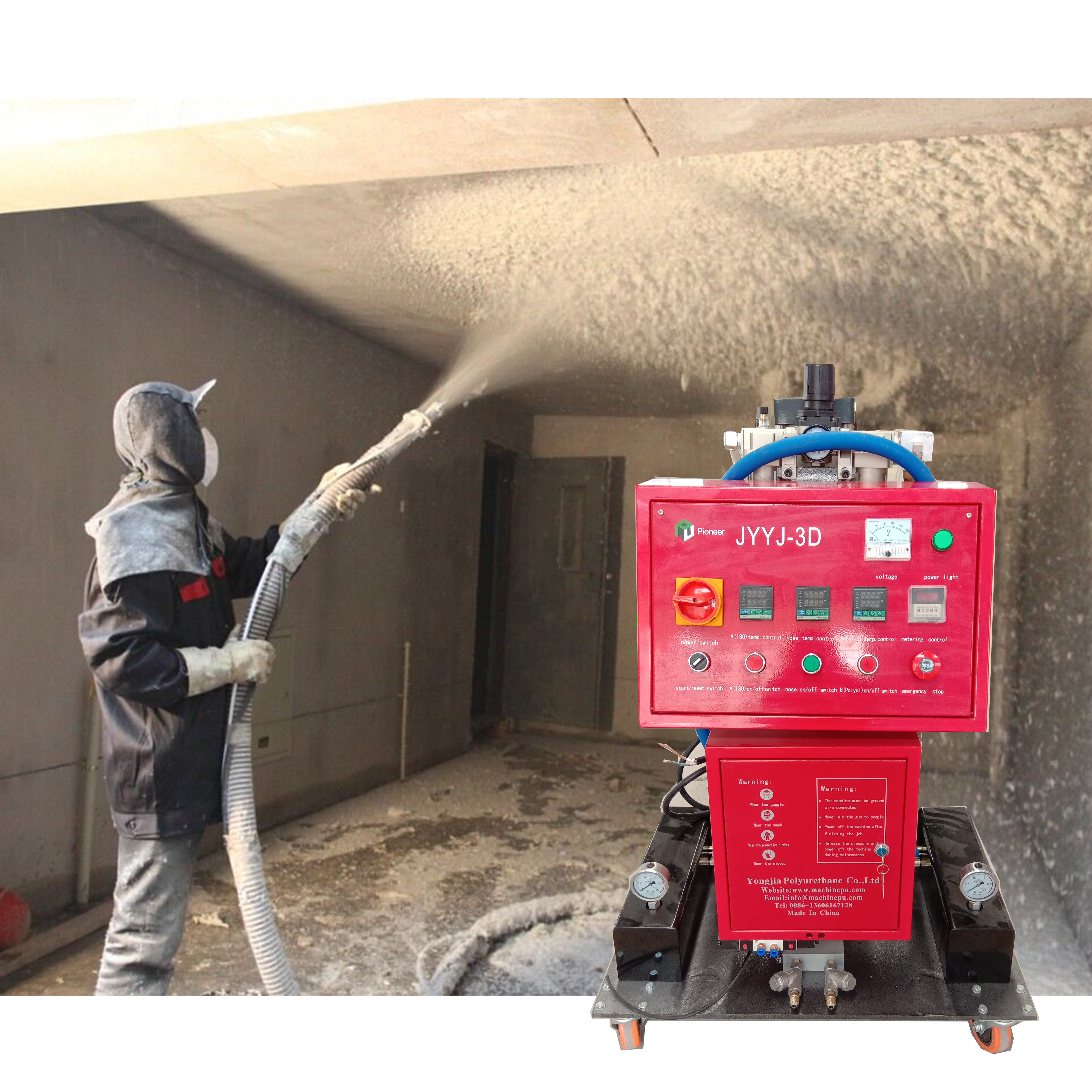Polyurethane spraying is high pressure polyurethane spraying equipment. Because the material of the high-pressure spray equipment is slammed into a small mixing chamber and spun vigorously at high speed, mixing is very good. The material moving at high speed forms fine mist droplets at the nozzle of the spray gun and sprays them evenly on the surface of the object. Foamed polyurethane spraying is mainly used for heat preservation and sealing in heat preservation and refrigeration. It is used for the coating of thermal insulation materials such as large spherical storage tanks, large-diameter special-shaped pipe fittings, and cold storage walls, and can realize on-site foaming.

Many problems are often encountered in the construction of polyurethane spraying, so what are these problems? How did this happen?
This is mostly a performance issue, which is described as follows:
| Common Problem | Reason | Suggest |
| Rough and irregular foam surface | Poor atomization, especially more common with household air-mixing sprayers | The back pressure of the air compressor and the distance from the base plate can be adjusted appropriately. If possible, lengthen and reduce the air mixing nozzle. Small bore. The polyurethane high-pressure sprayer can be properly kept away from the substrate. |
| Foaming time too fast and viscosity of black and white | ||
| Foam is too soft | Too much polyether | It is recommended to perform the free foaming test at the correct ratio. If it is still soft, you can increase the proportion of isocyanate l appropriately. If it is still soft, it must be checked whether ethylenediamine should be used, appropriately increasing the raw materials used in the white material. |
| foam is crisp
|
Too much water in the system | If only the surface is brittle, consider if the difference between the material temperature and the ambient temperature is too large, if the material temperature is high, and the ambient temperature is low. Another reason is that there is too much difference in viscosity between polyether and Isocyanate and more isocyanate. |
| The viscosity difference between polyether and Isocyanate is too large | ||
| Low peel strength between foam and substrate | The surface of the substrate is not clean, with floating dust or oil stains | There was no penetration of the substrate, and moisture at the interface was visible by peeling. In addition, the temperature of the substrate is too low, and the foaming speed is too fast. “Spraying” (i.e. spraying a thin base layer quickly), but a thicker spray can also cause excessive tension and peeling. |
| bubble burst
|
Due to the low degree of branching and functionality of the polyether used in the foaming system | Sucrose, mannitol can be added as a polyether starter as appropriate. In addition, appropriately increase the number of spray layers during construction to avoid repeated phenomena |
| separate
|
Foaming time is too fast or too slow | Pay attention to control the foaming speed |
| Too much silicone oil surfactant is added to the foaming system |
Post time: Jul-01-2022


